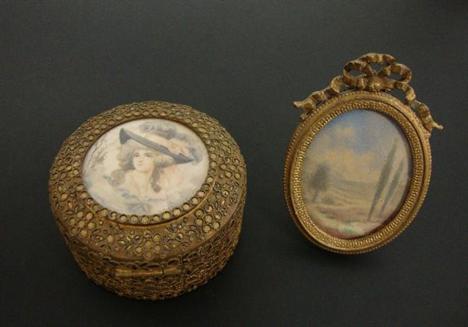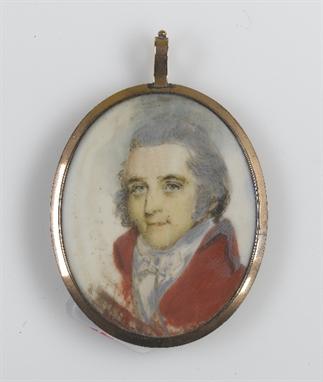Major Cyprian Bridge (1807-1885) Military Topographer of the First Maori War (1845-47). English School, 19th century, portrait miniature, watercolour on ivory, rectangular, 7cm x 9cm After Hone Heke`s attacks on the flagpole at Kororareka, the War in the North began with the invasion of the town on the 11th of March 1845 and continued until the sack of Ruapekapeka pa on the 11th of January 1846. Over these ten violent months regular British forces learned for the first time what it was to face a Maori foe, many men died during frontal assaults on pa that were impregnable by such tactics The British were again repulsed in May at a pa built by Heke near Okaihau and again at Ohaiawai in July, where they suffered heavy losses. The final Maori stand was made at Te Ruki Kawiti`s pa Ruapekapeka, where nearly two hundred defenders faced a combined British and Auckland volunteer force of over sixteen hundred. Equipped with heavy artillery, this proved to be a easy victory for the Imperial forces, who quickly overran the Maoris when most of them were at their customary prayer meeting outside the pa Two soldiers made extended visual records of this war, Lance-Sergeant John Williams of the 58th Regiment, and his superior, Major Cyprian Bridge. Their pictures are vital historical documents of the first pakeha war, and have been used in illustrations in histories from as early as 1859. Even so, direct information about the pictures and their production is both rare and scattered, like the pictures themselves "The British soldier found the Maori on the whole the grandest native enemy that he ever encountered. Gurkhas and Sikhs were formidiable before them; Zulus were formidable after them, but all these had copied European discipline. The Maori had his own code of war, the essence of which was a fair fight on a day and place fixed by appointment, which the best and bravest man should win. The British soldier, therefore, held him in deepest respect, not resenting his own little defeats, but recognising the noble side of the Maori, and forgetting his savagery` Sir John Fortescue Visit www.dnfa.com for condition reports
We found 31366 price guide item(s) matching your search
There are 31366 lots that match your search criteria. Subscribe now to get instant access to the full price guide service.
Click here to subscribe- List
- Grid
-
31366 item(s)/page
An oval miniature watercolour portrait on porcelain believed to depict Marie-Therese Louisa di Savoia-Carignano, later the Princesse de Lamballe, close confidante of Marie Antoinette, the finely painted underglaze watercolour portrait of concave form, with underglaze blue interlaced `L`s Sevres mark to the reverse, with date mark `L` for 1764 and painter`s mark `S....` beneath, within an oval gilt brass frame, 4.5 x 3.5in (11.5 x 9cm).
Russell Cruix: An early 20c. portrait miniature of a child on probably ivory, she seated quarter profile in a christening dress. The modern frame centred by a hook with the following verso "Roberts Antiques, specialists in early English ceramics, textiles and fine arts" The image 2.25 cms. by 7.75 cms.
Late 19th Century miniature - Portrait of a lady wearing a black lace edged dress and with fur stole, reverse engraved `Mrs W S. Seton-Karr, 1893`, 8cm x 6.5cm. This is probably a portrait of Mrs Walter Scott Seton-Karr (nee Eleanor Katherine Cust), her husband was author of `The Marquess Cornwallis and The Consolidation of British Rule
19th Century miniature - Portrait of General Lord William Frederick Ernest Seymour, K.C.V.O. (1838-1915), unsigned but within gilt metal frame engraved with title and text `By Mrs Emily Barnard, 1904` The sitter fought in the Baltic Campaign in 1854, Crimean War in 1856, Egyptian Campaign in 1882 and held the office of Lieutenant of the Tower of London between 1902 and 1905
-
31366 item(s)/page
































